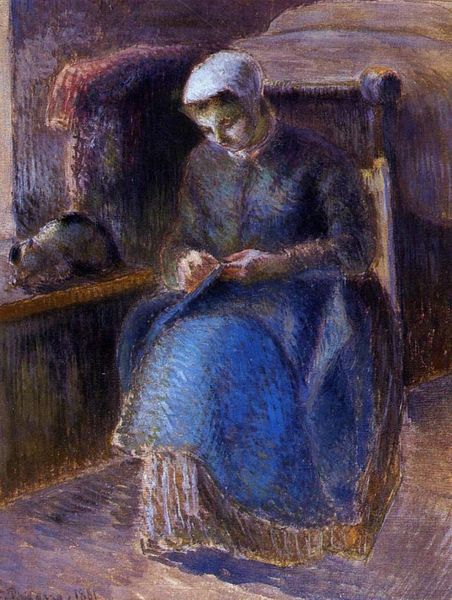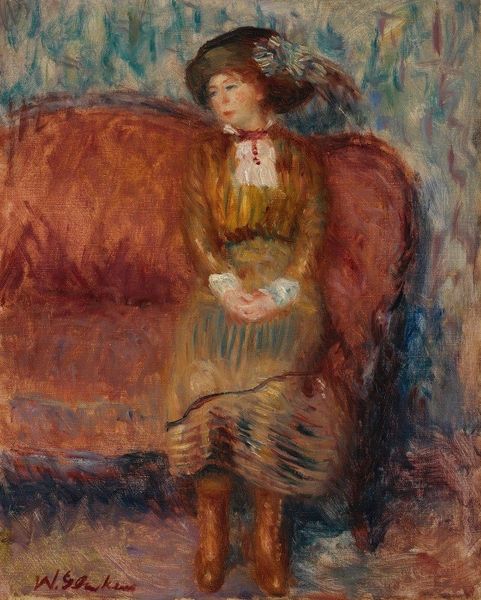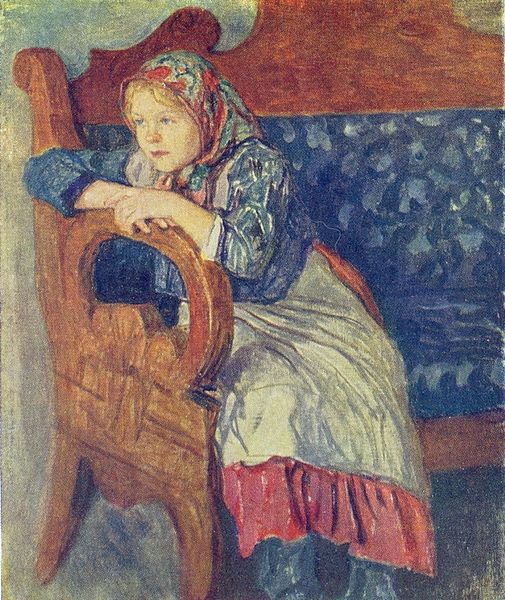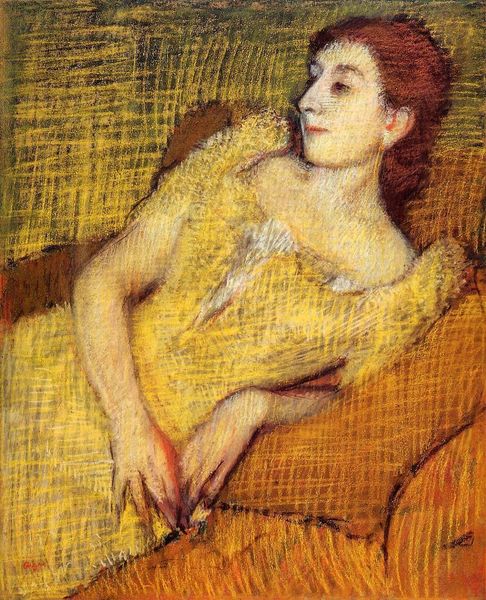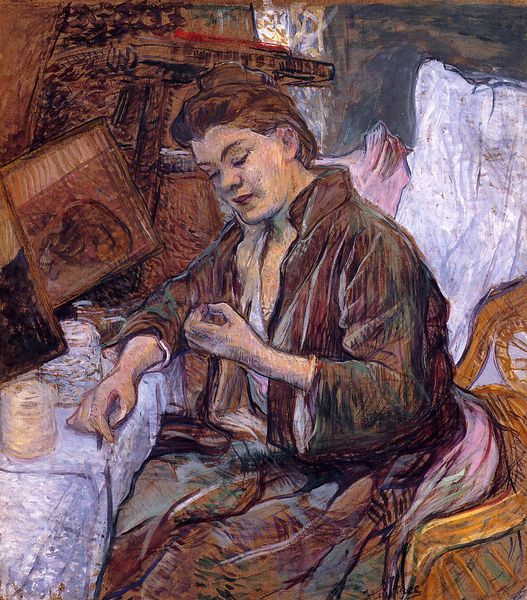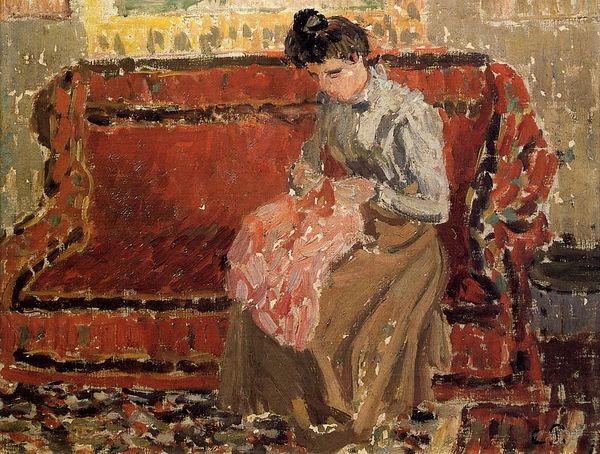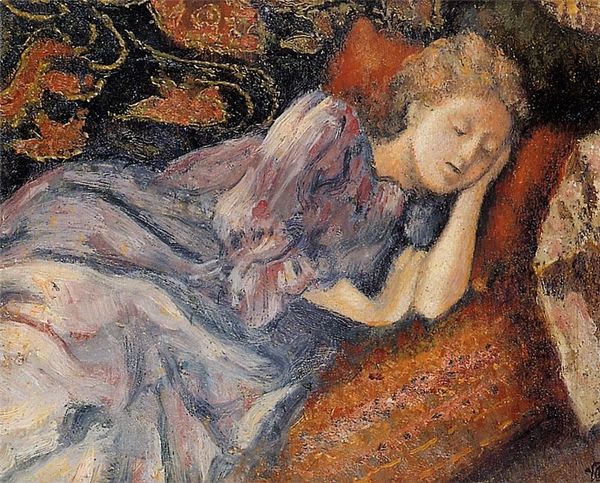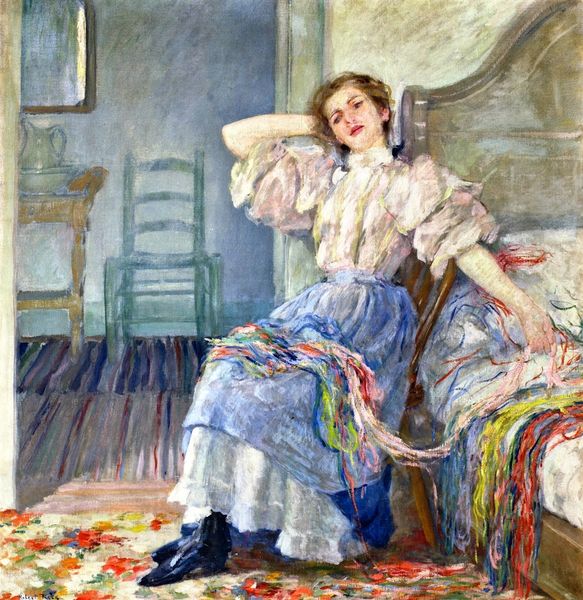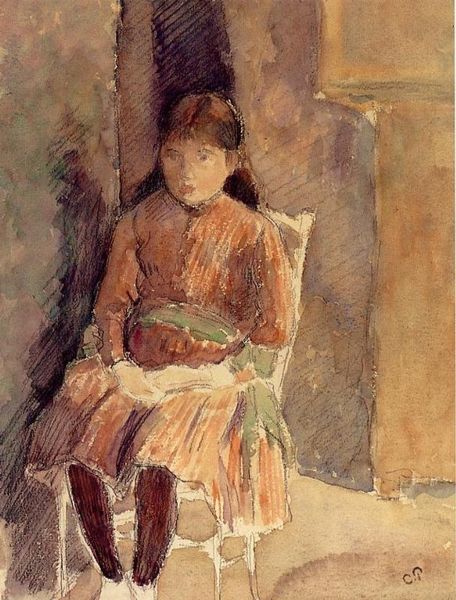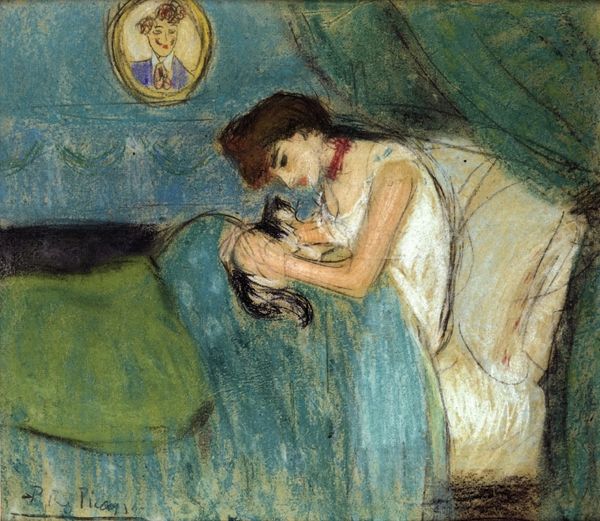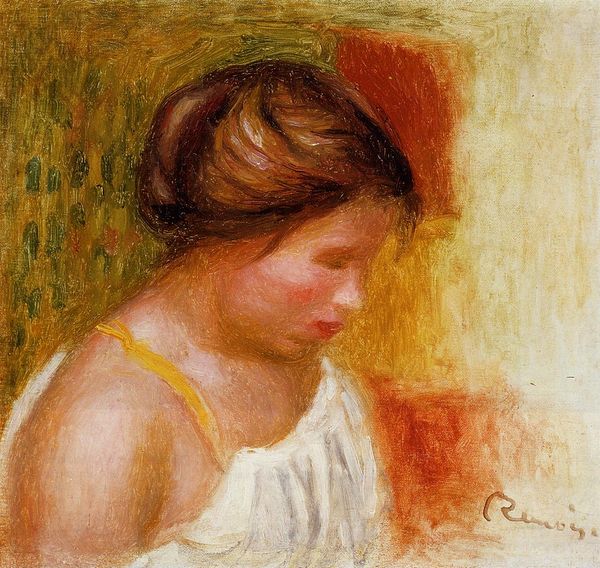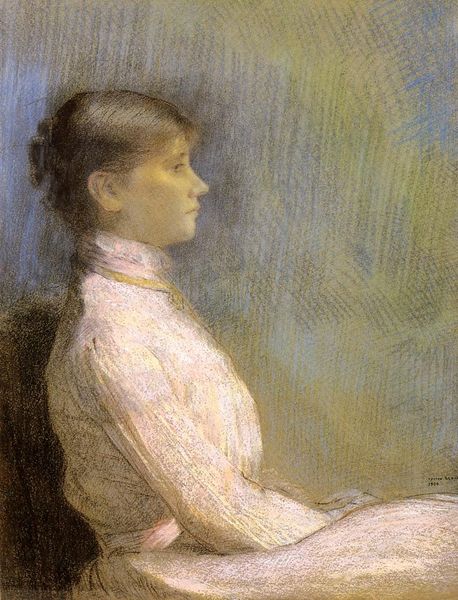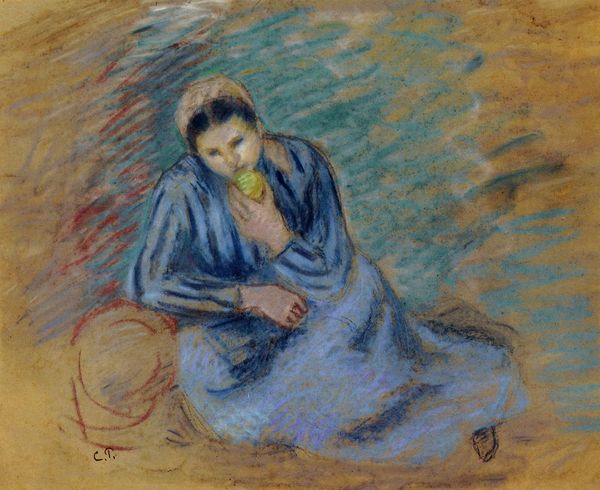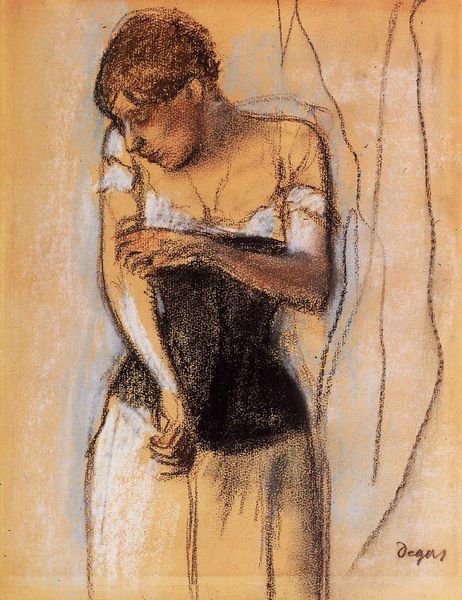
drawing, pastel, frottage
#
portrait
#
drawing
#
charcoal drawing
#
intimism
#
portrait drawing
#
pastel
#
post-impressionism
#
frottage
Copyright: Public domain
Editor: This is Georges Lemmen's drawing, "Julie Lemmen Sleeping in an Armchair," it's composed of pastel and charcoal. It has such a serene and private atmosphere, and the sitter seems lost in her thoughts. How do you interpret this work? Curator: That feeling of intimacy you describe is key. Intimism, as a movement, pushed back against the grand narratives of academic painting, focusing instead on domestic life and private moments. The title frames the figure, Julie, in this state, but it's the artist's wife—making that relationship another lens into understanding intimacy, and gender roles. What do you see in her posture and attire? Editor: Her posture suggests weariness, maybe even sadness. She seems to withdraw. And her dress is elegant but plain. Is it relevant that it is made by the artist and is post-impressionist? Curator: Absolutely! Remember, Post-Impressionism was not a unified movement but more of a reaction to Impressionism’s focus on fleeting moments and optical sensations. Artists like Lemmen delved deeper into subjective emotion and symbolic content, also investigating class representation in regards to working class. He would have used mark-making to convey the feelings he thought to be hidden within Julie's experience as his wife. Where do you see the emotional depth registered in the picture? Editor: It’s subtle, but her downcast gaze and the way she’s kind of slumped into the chair suggests so much. Is there a kind of political weight given what we discussed on post-impressionism and focus on interiority? Curator: Indeed, it serves as a visual resistance, capturing and celebrating the quiet strength and complexity of women’s interior lives. This subversion could have also played with societal issues that often cast a woman as delicate, fragile, docile, in stark contrast. This would have turned them into a passive recipient to experiences; he is imbuing his sitter with emotion. It certainly made me rethink the power dynamics inherent in portraiture and domestic life at the time. Editor: This reframes it entirely for me. It makes you think how art might affect the world outside the picture.
Comments
No comments
Be the first to comment and join the conversation on the ultimate creative platform.
